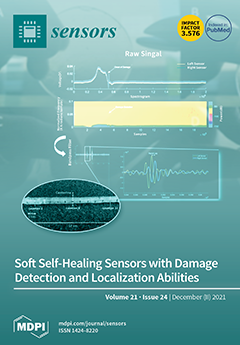Open AccessArticle
Predictive Machine Learning Models and Survival Analysis for COVID-19 Prognosis Based on Hematochemical Parameters
by
Nicola Altini, Antonio Brunetti, Stefano Mazzoleni, Fabrizio Moncelli, Ilenia Zagaria, Berardino Prencipe, Erika Lorusso, Enrico Buonamico, Giovanna Elisiana Carpagnano, Davide Fiore Bavaro, Mariacristina Poliseno, Annalisa Saracino, Annalisa Schirinzi, Riccardo Laterza, Francesca Di Serio, Alessia D’Introno, Francesco Pesce and Vitoantonio Bevilacqua
Cited by 9 | Viewed by 3648
Abstract
The coronavirus disease 2019 (COVID-19) pandemic has affected hundreds of millions of individuals and caused millions of deaths worldwide. Predicting the clinical course of the disease is of pivotal importance to manage patients. Several studies have found hematochemical alterations in COVID-19 patients, such
[...] Read more.
The coronavirus disease 2019 (COVID-19) pandemic has affected hundreds of millions of individuals and caused millions of deaths worldwide. Predicting the clinical course of the disease is of pivotal importance to manage patients. Several studies have found hematochemical alterations in COVID-19 patients, such as inflammatory markers. We retrospectively analyzed the anamnestic data and laboratory parameters of 303 patients diagnosed with COVID-19 who were admitted to the Polyclinic Hospital of Bari during the first phase of the COVID-19 global pandemic. After the pre-processing phase, we performed a survival analysis with Kaplan–Meier curves and Cox Regression, with the aim to discover the most unfavorable predictors. The target outcomes were mortality or admission to the intensive care unit (ICU). Different machine learning models were also compared to realize a robust classifier relying on a low number of strongly significant factors to estimate the risk of death or admission to ICU. From the survival analysis, it emerged that the most significant laboratory parameters for both outcomes was
C-reactive protein min;
(95% CI 6.548–49.277,
p < 0.001) for death,
(95% CI 1.000–3.200,
p = 0.050) for admission to ICU. The second most important parameter was
Erythrocytes max;
(95% CI 1.141–2.729,
p < 0.05) for death,
(95% CI 0.895–2.452,
p = 0.127) for admission to ICU. The best model for predicting the risk of death was the decision tree, which resulted in ROC-AUC of 89.66%, whereas the best model for predicting the admission to ICU was support vector machine, which had ROC-AUC of 95.07%. The hematochemical predictors identified in this study can be utilized as a strong prognostic signature to characterize the severity of the disease in COVID-19 patients.
Full article
►▼
Show Figures






